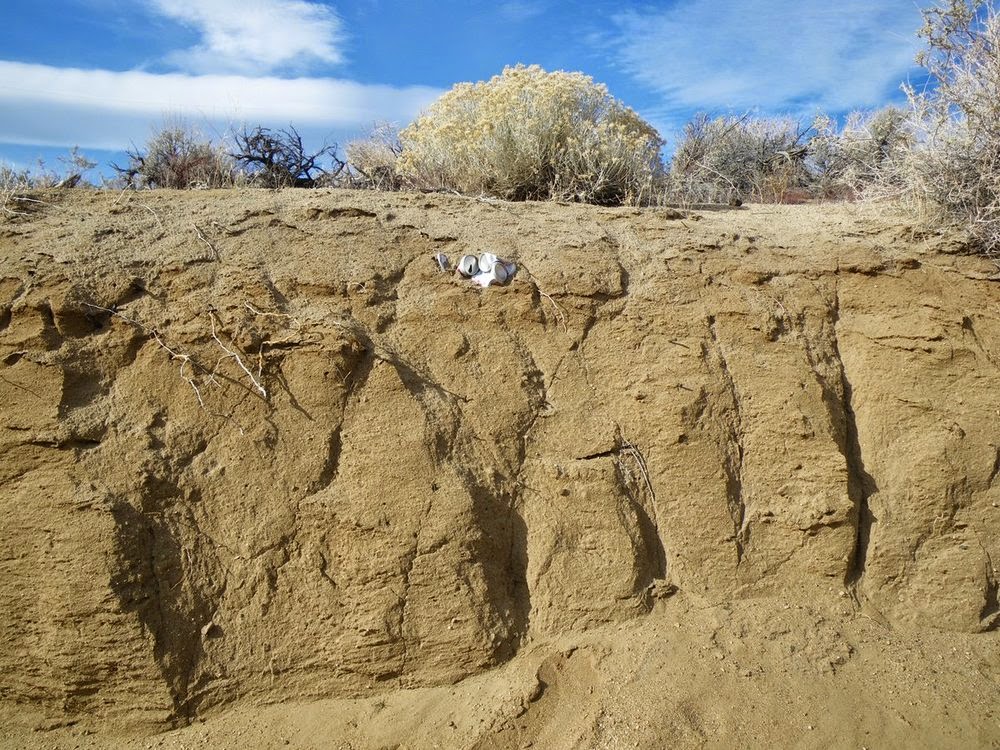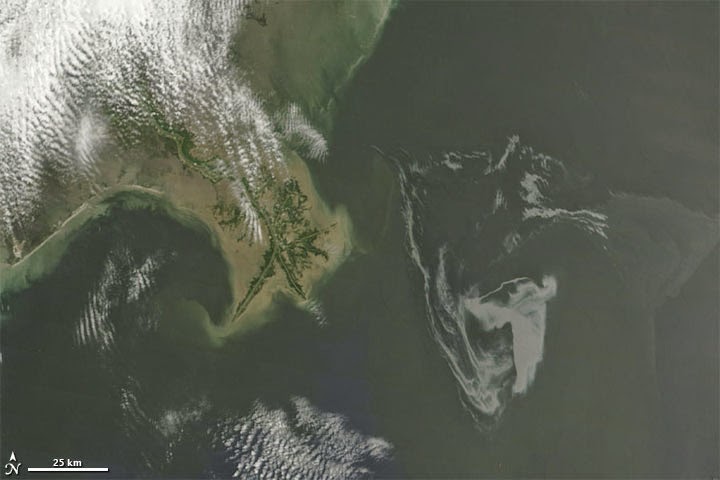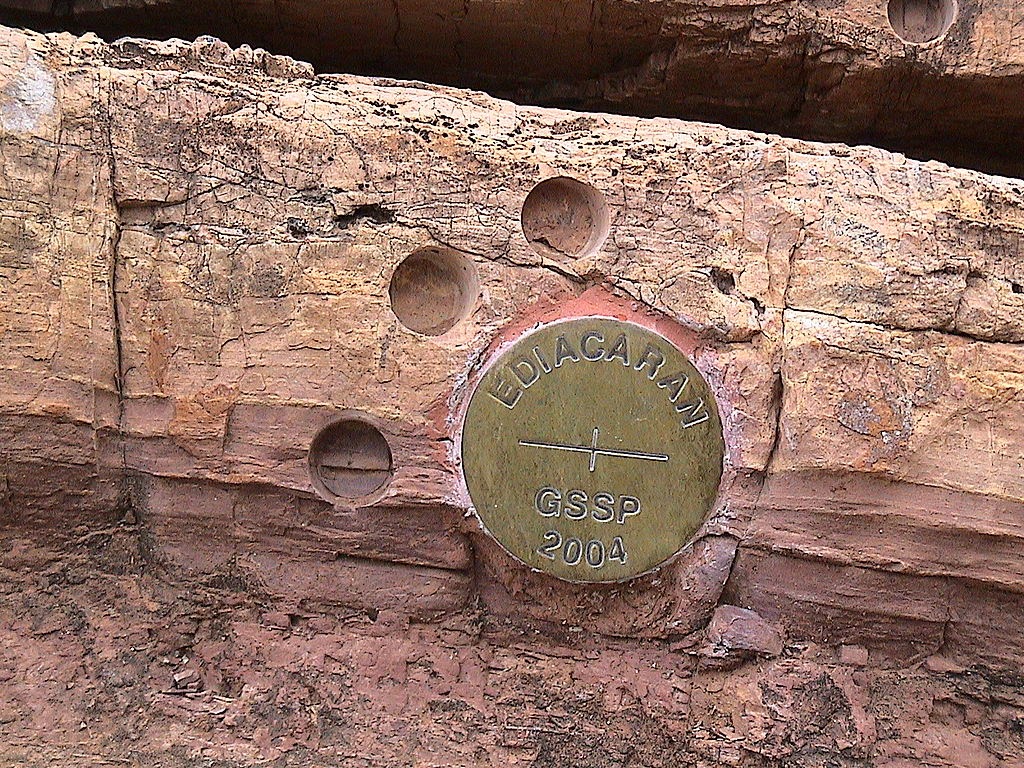There are few places on Earth where the impact that humans have had on our planet’s surface cannot be seen. This may be as small as the Russian flag on the ocean floor at the North Pole to as large as the Greenhouses of Almería or the Kennecott Copper Mine. Even the oceans are not immune to our visible influence as seen in the Deep Horizon oil spill covering nearly 176,100 km2 or the great garbage patch of the Pacific Ocean spanning up to 15,000,000 km2. These extremes only briefly describe the visible impact of human civilization, whereas the chemical impact is far more intricate and difficult to accurately quantify. These impacts (many of them considered irreversible and relevant on geologic timescales) have led many to postulate that the evolution of homo sapiens sapiens and the subsequent technological revolution has ushered in a new geologic era in Earth history.
The idea that the human race had a great enough impact to warrant such a claim was first proposed by Georges Louis Leclerc in 1778 in which he stated,
“Lorsque la puissance de l’homme a secondé celle de la tèrre.”
“And now the power of man seconded [assisted, propped up] the Earth.”
This statement was issued in a positive light wherein Leclerc felt as though what mankind had accomplished was done for the benefit of the Earth. Little did he know what nearly 250 years later, many scientists would proclaim exactly the opposite.
Today at the BGS, Jan Zalasiewicz discussed how these ideas of Leclerc were not initially accepted by natural scientists of the day. These naysayers claimed that the Earth was far to big and Earth history was far too deep for humans to have any great and lasting effect, even within the minuscule estimates of Earth’s age proposed at the time.
The ideas of Leclerc, although under very different circumstances and using very different data, were brought back to light in the early 1980’s when Eugene Stoermer proposed using the term Anthropocene for the current geological epoch to describe the impact of human activities on the planet. The term was subsequently popularized by Paul Crutzen when in 2000 it was used in conjunction with anthropogenic climate change. Prof. Crutzen is most noted for winning the Nobel Prize in Chemistry (with Dr. M. Molina and Dr. F. S. Rowland) for work on the Ozone layer. For nearly a decade, the term remained an informal distinction at times was used as tongue in cheek. It was not until 2008, when a proposal was made to the Stratigraphic Committee of the Geological Society of London (led by Dr. Zalasiewicz) to formalize the Anthropocene as unit of geological epoch divisions.
The real question is, “When did the Anthropocene start?” … assuming that is we have already changed the Earth System to the extent that our impact is irreversible. Some argue that this epoch began nearly 8,000 years ago, other claim as early as the 1950’s. Personally, I think we should use the Beer-can horizon, after all of the other geologic epochs with a recognized GSSP (Global Boundary Stratotype Section and Point) are defined at a particular horizon.
 |
| The “beer-can Horizon” from Impossible Geology |
“To assign a more specific date to the onset of the “anthropocene” seems somewhat arbitrary, but we propose the latter part of the 18th century, although we are aware that alternative proposals can be made (some may even want to include the entire holocene).”
Others still focus on a much more recent starting point for the Anthropocene, a time which Zalasiewicz calls the Great Acceleration which hovers around the 1950’s. It is at this time when a series of “markers” apparently converge. There is the a dramatic shift in human population and enterprise. There is the dramatic “cliff” in CO2 and the drop in δ15N. The problem for stratigraphic purists arises when you seek to place a marker on when the Anthropocene began. Every previous geological timescale division for the past 635 million years is based on a point in stratigraphy somewhere on the planet. Although this exact stratigraphic position might not be as clear at other localities on the planet, there is a datum on which geologists can put there finger through which we can constrain global correlations. We could do this for the Anthropocene (see beer-can horizon above), the criteria we use to define the Anthropocene are so varied and in most cases are not even visible, such that any temporal assignment would be hotly debated (and let’s face it never agreed upon — the community still doesn’t agree on the Holocene) and would violate the fundamental aspect of all previous GSSP’s preceding it. Perhaps, if we are to move forward we need to redefine how we subdivide the geologic timescale. If we are not using stratigraphy or radiometric ages, then why not use a chemical signal?
Our attention was then turned to the changes in terrestrial fauna. Zalasiewicz said that the current extinction is 1000 times higher than the background levels seen at other “normal” times in geologic past. Barnosky et al. (Nature 2011) say that we are already in the sixth mass extinction event. We are seeing a skewing of biology with the influx and equilibration of invasive species and have completely changed the global faunal distribution. Of the total fauna biomass, Jan said that 65% belongs to domesticated animals, 32% are the humans, and <3% belongs to wildlife.
There is no doubt in my mind we have changed the face of the planet. However, I am unconvinced this shift is significant enough to warrant any formal stratigraphic distinction. In fact, in many ways it seems like purely an emotional construct. We want to believe we are important and so we make a case to highlight that in the wake of 4.5 billion years of Earth history. Perhaps a formalization will change the way our species views our impact on the planet and therefore ushers change in our behavior.
Nevertheless, it begs the question; “How long will the effects of mankind persist?” If you consider the Precambrian cratonic cores with rocks initially 20 km beneath Earth’s surface are now exposed at the surface (the deepest hole we have drilled is just over 12 kilometers deep). If we were to go extinct in a million years, and the conditions were right (basin formation and preservation), I have no doubt that our species will have a visible effect on the annals of the geologic past. Nevertheless, it should not be us that define this (except for purely emotional reasons), rather this should be defined by those who can look back and bracket at the full extent of our impact.
![]() This work is licensed under a Creative Commons Attribution-NonCommercial-ShareAlike 4.0 International License.
This work is licensed under a Creative Commons Attribution-NonCommercial-ShareAlike 4.0 International License.


